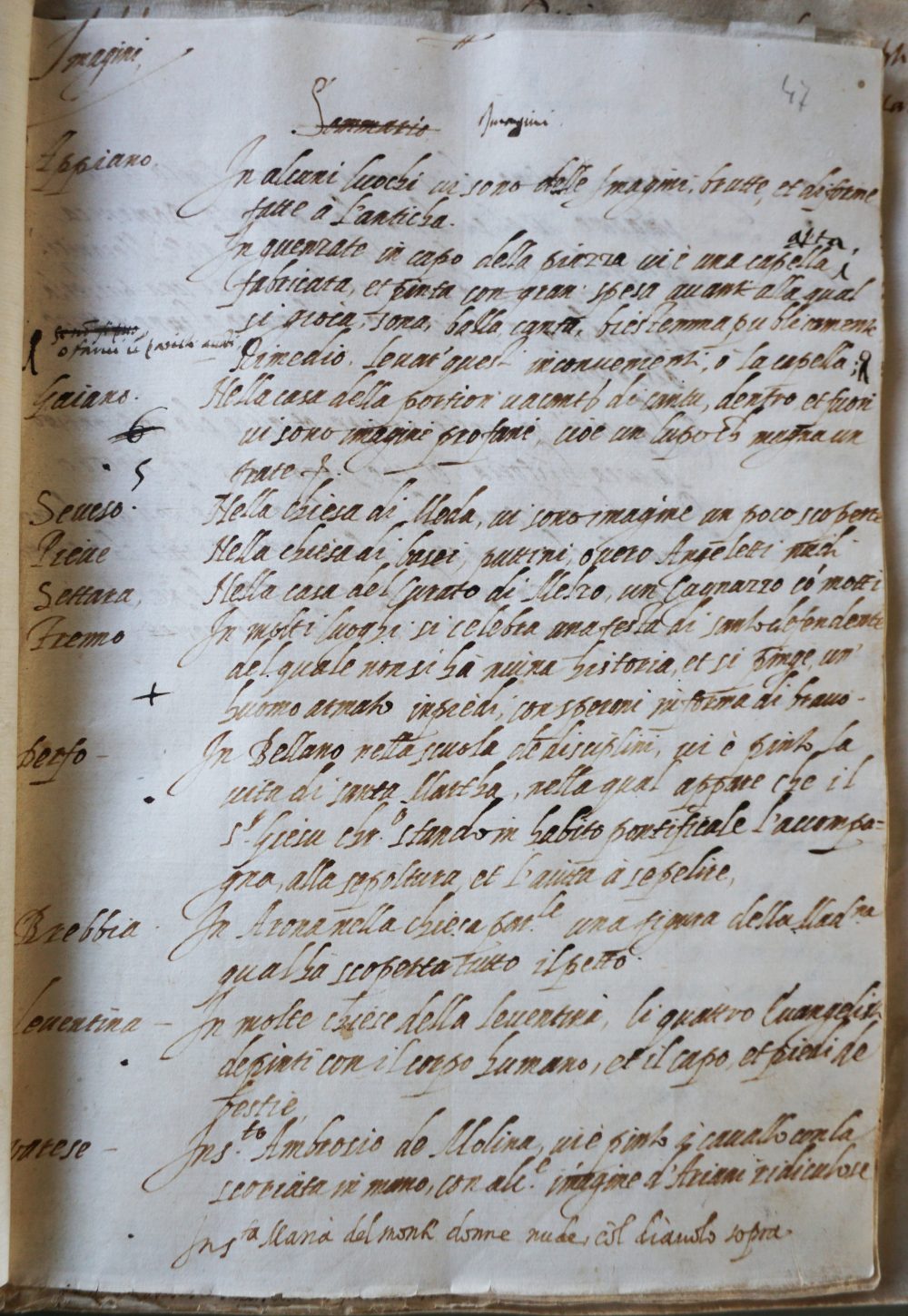
Milan, Archivio storico diocesano, MS Archivio Spirituale, Sezione XIV, vol. 67, Indici vari, f. 47r. © Archivio storico diocesano di Milano
The case described here comes from a 16th-century document preserved in the Diocesan Archives of Milan, in which fourteen works of art that needed to be amended or destroyed are listed. This list would appear to present the results of an inquiry into paintings, sculptures and sacred buildings that did not comply with the decrees of the Council of Trent, carried out in the dioceses of Milan at the request of Archbishop Carlo Borromeo, probably around 1576 (on the contents and the date of the document see Lurati 1968 and 1970; De Boer 2001, 223; Debernardi, forthcoming).
Figures of naked putti were reported in the church of Sant’Agata in Basiglio, a village on the outskirts of Milan. These artworkswhich could be either paintings or sculpturesmust have been created only some decades before they were denounced, since the church in which they appeared was built in 1545 (Freddo 2002, 28-29). Nudity in sacred art was a common target of Counter-Reformation censorship. The display of lascivious images in churches had been firmly prohibited by the Council of Trent (Alberigo 1973, 775), a ban which was later reiterated by Carlo Borromeo in his dispositions for the diocese of Milan (Ratti 1890, 36-37; Borromeo 1962, 42). Orders to cover up naked figures of angels are also recorded in the decrees of the pastoral visits performed by Pope Clement VIII in Rome during the last decade of the 16th century (Mansour 2013, 141-42, 146).
“In the church of Basiglio, little putti, that is naked angels.”
“Nella chiesa di basei, puttini, overo Angeletti nudi.”
Wietse De Boer, The Conquest of the Soul: Confession, Discipline, and Public Order in Counter-Reformation Milan, Leiden-Boston-Köln: Brill, 2001; Lea Debernardi, “Identifying and Censoring Improper Artworks in Carlo Borromeo’s Diocese: The Sixteenth-Century Index of Profane Paintings in the Milan Diocesan Archives”, forthcoming; Stefania Freddo (Ed.), Basiglio, Milano: Unicopli, 2002; Ottavio Lurati, “Superstizioni lombarde (e leventinesi) del tempo di San Carlo Borromeo”, Vox Romanica, 27, 1968, pp. 229-249; Ottavio Lurati, “Pene ai bestemmiatori, indulgenze, reliquie e ‘immagini profane’ nella Diocesi milanese (e nelle Tre Valli) ai tempi di San Carlo”, Folklore suisse/Folclore svizzero, 60, 1970, pp. 41-50; Opher Mansour, “Censure and Censorship in Rome, c. 1600. The Visitation of Clement VIII and the Visual Arts”, in Marcia B. Hall and Tracy E. Cooper (Ed.), The Sensuous in the Counter-Reformation Church, Cambridge: Cambridge University Press, 2013, pp. 136-160.



